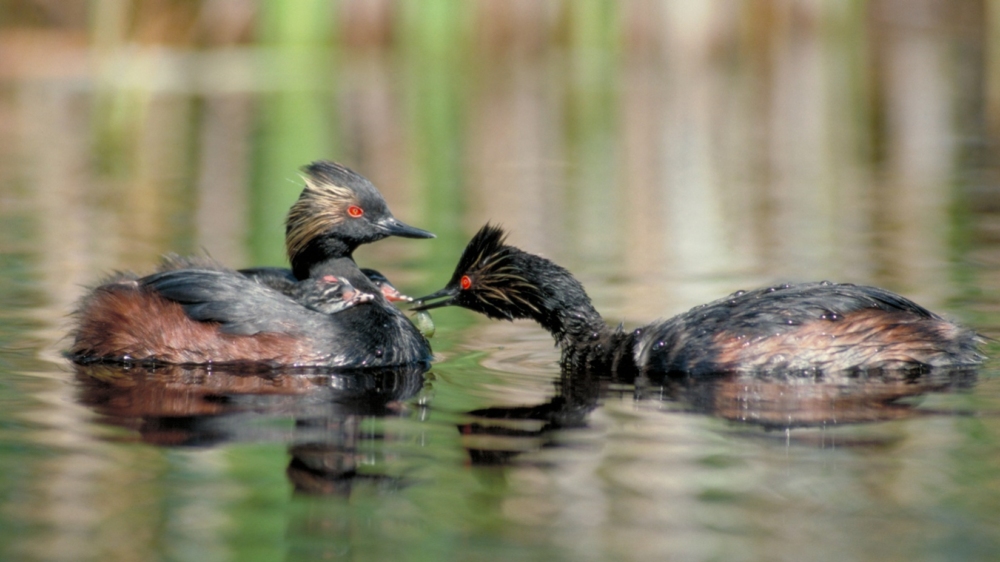Podiceps nigricollis

It may look like a duck, and swim like a duck, but it’s not a duck at all! With thin, pointy bills, and wide toes rather than webbed feet, grebes are a different sort of water bird and Eared Grebes are among the most common.
Habitat
Look for Eared Grebes on shallow lakes and ponds, without fish, across the prairies of Canada, interior British Columbia, and parts of the western United States. Winter takes them to saline waters, like Great Salt Lake, to feed before heading to smaller salt ponds, saline lakes, and ocean coastlines in the southern United States and Mexico.
Food
Eared Grebes feed primarily on aquatic invertebrates, especially brine shrimp and flies.
Behaviour
Gathering in flocks during migration, they nest in colonies on their summer breeding grounds. Before nesting they engage in elaborate courtship dances on the water. Adults will stay paired for the summer and both build the floating nest amongst cattail or rushes. Anywhere from 1 to 8 eggs are laid and incubated for about 22 days. The young can swim and eat after hatching, but you may see them hitching a ride on their parent’s backs. Eared Grebes use their excellent swimming and diving abilities to catch their food.
Conservation
Eared Grebes numbers are stable. They are of low conservation concern. Like other wetland dependent birds, drainage, leading to habitat loss, is their main threat.

